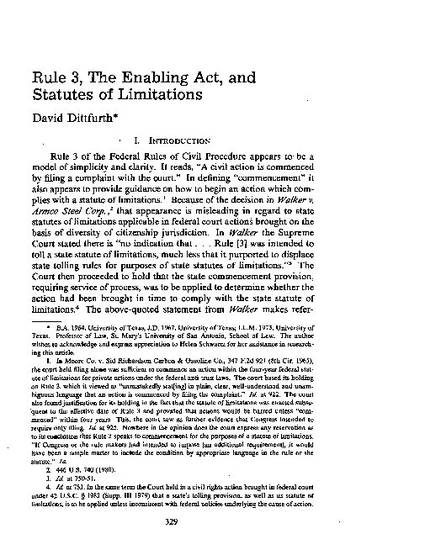
Rule 3 of the Federal Rules of Civil Procedure appears to be a model of simplicity and clarity. It describes the process for commencement of a civil action, and in defining “commencement” appears to provide guidance on how to begin an action which complies with a statute of limitations.
As a result of the decision in Walker v. Armco Steel Corp., that appearance is misleading regarding state statutes of limitations applicable in federal court actions brought on the basis of diversity of citizenship jurisdiction. There, the Court made reference only to state statutes of limitations, and expressly avoided deciding the role of Rule 3 with respect to federal statutes of limitations. It is difficult, however, to perceive any basis in the language of Rule 3 or in the reasoning of the Court for concluding that the role of the Rule would change according to the nature of the authority enacting the statute of limitations.
Because Rule 3 provides litigants with inaccurate information pertaining to a crucial step in the process of adjudication, it should be amended. When the deceptive appearance of simplicity fostered by Rule 3 is peeled away, one discovers a clutter of troublesome constitutional, statutory, and federalism problems that cannot be easily swept aside. Nothing beyond inertia justifies continuing the trap inherent in the present existence of Rule 3. This Rule should be changed so that it, like the other Rules, may be construed to secure the just, speedy, and inexpensive determination of every action on the merits.
